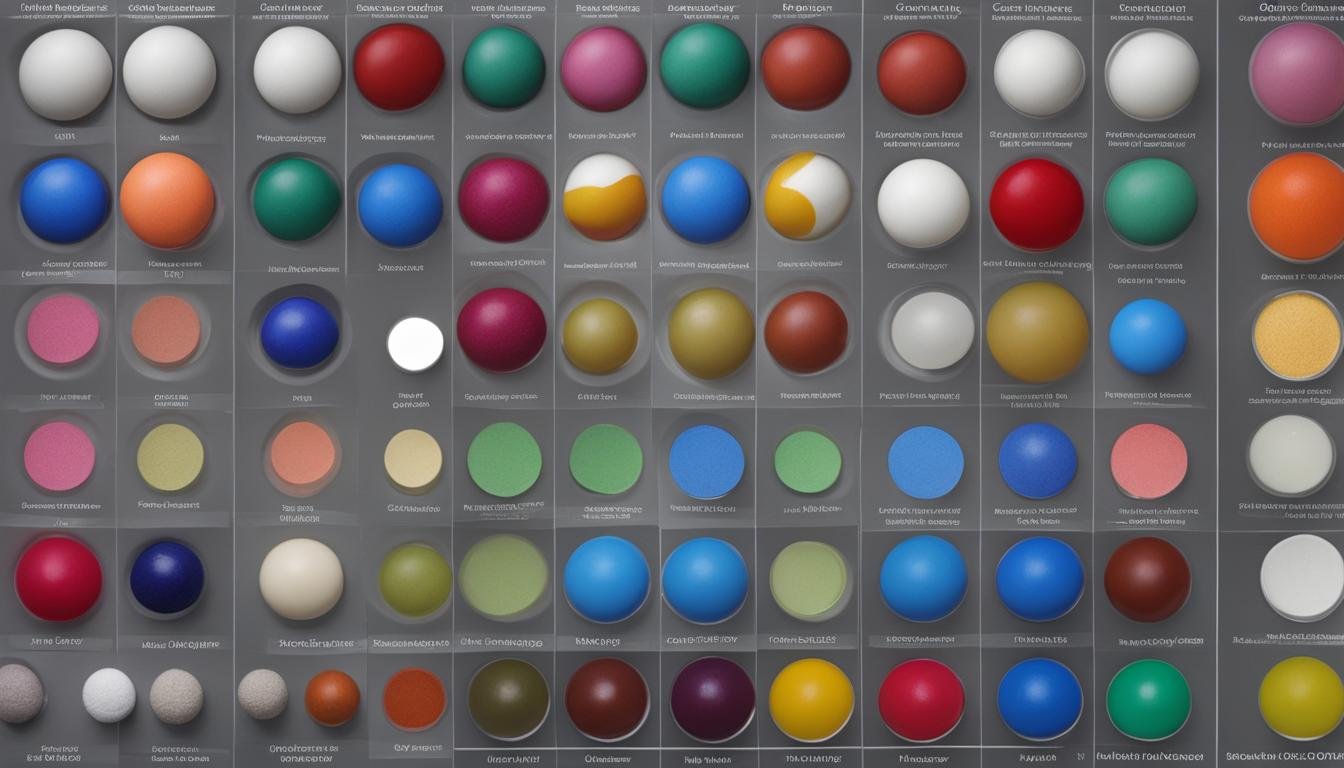Get our FREE E-Book HERE - 120 TIPS for Losing Weight & Bonus Tips for Postpartum Weight Loss & Dad’s Postpartum Experience
Victoza vs Ozempic: Differences and Similarities

Are you considering a prescription-based injectable medication for managing your type 2 diabetes? If so, you’ve probably come across two popular options: Victoza and Ozempic. But how do these medications compare? Is one more effective than the other? And what about the potential side effects and cost? Let’s dive into a comprehensive comparison of Victoza vs Ozempic to help you make an informed decision.
Key Takeaways:
- Victoza and Ozempic are both injectable medications used to treat type 2 diabetes.
- They have differences in their active ingredients, dosages, administration frequency, and age approvals.
- Both medications may cause weight loss as a side effect, but they also have potential side effects and warnings that should be considered.
- It is important to work with a healthcare provider to determine the most suitable medication for your individual diabetes management needs.
- Stay tuned as we explore the comparison of Victoza vs Ozempic in more detail.
Type 2 Diabetes and Its Symptoms
Type 2 diabetes is a common chronic disease characterized by high blood sugar levels. It occurs when the body’s cells are not responsive to insulin or do not produce enough insulin. Insulin is a hormone that helps regulate blood sugar levels. When insulin resistance or insufficient insulin production happens, the sugar in the blood cannot enter the cells effectively, leading to hyperglycemia.
If you have type 2 diabetes or are at risk of developing it, it’s essential to be aware of the symptoms. Recognizing the signs early can help you seek timely medical assistance and manage the condition effectively.
Symptoms of Type 2 Diabetes:
- Excessive thirst: Increased thirst, even after drinking plenty of fluids.
- Frequent urination: Needing to urinate more often than usual, especially at night.
- Extreme fatigue: Feeling tired and low on energy despite getting adequate rest.
In addition to these prominent symptoms, other signs of type 2 diabetes can include:
- Blurred vision
- Unexplained weight loss
- Slow-healing wounds or sores
- Frequent infections, such as yeast infections
If you experience any of these symptoms, it’s crucial to consult a healthcare professional for diagnosis and appropriate treatment. Keep in mind that the severity and combination of symptoms can vary from person to person.
It’s important to understand that type 2 diabetes is often linked to obesity and a sedentary lifestyle. Obesity and excess weight can contribute to insulin resistance, making blood sugar control more challenging. Engaging in regular physical activity and maintaining a healthy weight through proper diet and exercise can play a significant role in managing type 2 diabetes.
Incorporating physical activity into your daily routine helps your body utilize insulin more effectively, regulate blood sugar levels, and maintain overall health. Additionally, adopting a healthy diet that includes a balance of nutritious foods and controlled portions can help manage blood sugar and support weight management. It’s important to work closely with your healthcare team to develop an individualized diabetes treatment plan that suits your specific needs and lifestyle.
Victoza: Uses, Dosage, and Safety Information
Victoza is a medication used to lower blood sugar levels in individuals with type 2 diabetes. It contains the active ingredient liraglutide, which is a glucagon-like peptide-1 (GLP-1) agonist. This medication is administered through subcutaneous injection, meaning it is injected just under the skin.
Victoza is approved by the FDA for the treatment of type 2 diabetes in adults and children. In addition to its blood sugar-lowering effects, Victoza has been shown to reduce the risk of heart attack or stroke in individuals with heart disease.
While not FDA-approved for weight loss, Victoza has been found to cause weight reduction in some patients. This off-label use has gained attention as an additional benefit for individuals who may also need to manage their weight.
However, it is important to be aware of the potential side effects associated with Victoza. These can include pancreatitis (inflammation of the pancreas), gallbladder problems, and the risk of thyroid C-cell tumors. This medication carries a boxed warning regarding the risk of thyroid C-cell tumors, which are a rare but serious side effect.
Proper injection techniques should be followed when using Victoza to ensure accurate dosage and minimize the risk of complications. Your healthcare provider can guide you on the correct injection technique and provide dosing guidelines specific to your needs.
Note: The image below shows a person administering a subcutaneous injection.

Victoza Side Effects
While Victoza is generally well-tolerated, it may cause side effects in some individuals. Common side effects include nausea, diarrhea, and headache. These side effects are usually mild and resolve on their own. However, if you experience persistent or severe side effects, it is important to contact your healthcare provider.
More serious side effects, although rare, can occur with Victoza. These include severe allergic reactions, pancreatitis, and gallbladder problems. If you experience symptoms such as severe abdominal pain, persistent vomiting, or signs of an allergic reaction (such as difficulty breathing or swelling of the face, lips, tongue, or throat), seek immediate medical attention.
| Side Effects | Frequency |
|---|---|
| Nausea | Common |
| Diarrhea | Common |
| Headache | Common |
| Severe allergic reactions | Rare |
| Pancreatitis | Rare |
| Gallbladder problems | Rare |
Please consult your healthcare provider for a complete list of possible side effects and for guidance on the safe use of Victoza.
Ozempic: Uses, Dosage, and Safety Information
Ozempic is a GLP-1 agonist medication that can help regulate blood sugar levels in adults with type 2 diabetes. It is also FDA-approved to reduce the risk of heart attack or stroke in individuals with heart disease. Although not specifically indicated for weight loss, Ozempic may lead to weight reduction as a potential benefit.
To administer Ozempic, it is important to follow the recommended subcutaneous injection technique. This involves inserting the medication just beneath the skin, typically in the abdomen, thigh, or upper arm. Please note that Ozempic is administered once weekly, unlike other diabetes medications that require daily injections.
Like any medication, Ozempic does come with potential side effects. It is important to be aware of these and monitor for any changes. Common side effects may include nausea, diarrhea, and injection site reactions such as redness or itching. It’s advisable to speak to your healthcare provider if these side effects persist or worsen.
Boxed Warning
Ozempic carries a boxed warning regarding the risk of thyroid C-cell tumors. While the likelihood is rare, it’s essential to be aware of this potential risk. Regular monitoring and discussions with your healthcare provider can help mitigate any potential concerns.
Injection Techniques
Proper injection techniques are crucial for the safe and effective use of Ozempic. Here are a few guidelines:
- Wash your hands and clean the injection site as instructed.
- Select the appropriate injection site (abdomen, thigh, or upper arm) and ensure rotation between sites to prevent skin irritation.
- Use a new, sterile needle for each injection.
- Follow the recommended dose and administration instructions provided by your healthcare provider.
- Store Ozempic in the refrigerator at a temperature between 36°F and 46°F (2°C and 8°C), and keep it in the original packaging until use.

| Side Effects | Frequency |
|---|---|
| Pancreatitis | Rare |
| Thyroid C-cell tumors | Rare |
| Gallbladder problems | Common |
As with any medication, it’s essential to discuss all potential side effects, concerns, and questions with your healthcare provider before starting Ozempic. Your healthcare provider will provide the appropriate dosing guidelines based on your specific needs and medical history.
Victoza vs Ozempic: Dosages and Administration
When considering the use of Ozempic and Victoza for the treatment of type 2 diabetes, it is important to understand their differences in dosages and administration. These factors play a crucial role in determining the appropriate medication for individual needs.
Victoza Dosage:
Victoza is administered once daily through subcutaneous injection, which means injecting the medication just beneath the skin. The recommended starting dose for both adults and pediatric patients 10 years of age and older is 0.6 mg once daily. The dosage can be gradually increased to a maximum dose of 1.8 mg based on the individual’s response and blood sugar control.
Ozempic Dosage:
Ozempic, on the other hand, is administered once weekly through subcutaneous injection. It is not approved for use in children or adolescents below 18 years of age, unlike Victoza. The recommended starting dose for Ozempic is 0.25 mg once weekly, which can be gradually increased to 0.5 mg based on the patient’s response and blood sugar control.
| Medication | Dosage | Administration Frequency | Approved Age Group |
|---|---|---|---|
| Victoza | 0.6 mg to 1.8 mg | Once daily | Children (10 years and older) & Adults |
| Ozempic | 0.25 mg to 0.5 mg | Once weekly | Adults (18 years and older) |
As indicated in the table, Victoza is available in different doses, offering flexibility in selecting the most appropriate strength for each individual. It comes in prefilled pens that simplify the injection process. Conversely, Ozempic is provided in single-dose pens with different dose options, making it convenient for weekly administration.
It is worth noting that Victoza is also available in a generically available form known as liraglutide. However, please consult with your healthcare provider to determine the most suitable medication and dosage for your specific condition.

Tips for Safe Use of Victoza and Ozempic
To ensure the safe and effective use of Victoza and Ozempic, it is essential to follow proper guidelines and techniques. Here are some tips to help you maximize the benefits of these medications:
1. Subcutaneous Injections
Both Ozempic and Victoza are administered through subcutaneous injections. It is crucial to receive proper training from your healthcare provider on how to perform these injections correctly. This will help ensure accurate delivery of the medication into the fatty tissue below the skin’s surface.
2. Rotation of Injection Sites
Rotate the injection sites to avoid developing skin problems, such as hardened or lumpy areas. Alternate between different areas of the abdomen, thighs, or upper arm to minimize discomfort and improve absorption.
3. Proper Injection Techniques
Follow the recommended injection techniques provided by your healthcare provider for both Victoza and Ozempic. This includes inserting the needle at the correct angle and injecting the medication slowly. Additionally, be sure to use a new pen needle for each dose to reduce the risk of contamination.
4. Missed Doses
If you miss a dose of Victoza or Ozempic, the instructions may differ between the two medications. Review the specific guidelines outlined by your healthcare provider or refer to the medication package insert for proper instructions on what to do if a dose is missed.
5. Proper Storage
Store Ozempic and Victoza according to the manufacturer’s instructions. Typically, these medications should be stored in a refrigerator between 36°F to 46°F (2°C to 8°C). Avoid freezing and do not use the medication if it has been exposed to temperatures outside the recommended range.
6. Starting Dose
Always follow your healthcare provider’s instructions regarding the starting dose of Victoza or Ozempic. The appropriate starting dose may vary based on individual factors, such as your current blood sugar levels and diabetes management goals.
7. Hemoglobin A1C Reduction and Cardiovascular Risk Reduction
Victoza and Ozempic are prescribed to lower hemoglobin A1C levels and reduce the risk of cardiovascular complications in individuals with type 2 diabetes. However, it’s important to note that individual responses to these medications may vary. Regular monitoring of blood sugar levels and periodic assessment of cardiovascular risk factors are essential for optimal management.
8. Lifestyle Changes
While Ozempic and Victoza can be effective in controlling blood sugar levels, they should complement a healthy lifestyle. Make positive changes such as adopting a balanced diet, engaging in regular physical activity, and maintaining a healthy weight. Consider participating in the National Diabetes Prevention Program if you have prediabetes to prevent or delay the onset of type 2 diabetes.
By implementing these tips, you can promote safe and effective use of Victoza and Ozempic, contributing to better diabetes management and improved overall health.
Effectiveness and Warnings of Victoza and Ozempic
When it comes to managing type 2 diabetes and reducing the risk of cardiovascular problems, both Victoza and Ozempic have proven to be effective medications. These injectable drugs have demonstrated their ability to lower blood sugar levels and provide cardiovascular risk reduction in adults with type 2 diabetes.
The effectiveness of Ozempic and Victoza can vary from person to person due to individual factors and dosage adjustments. It is important to work closely with your healthcare provider to determine the optimal dosage and monitor your response to the medication. Regular follow-up appointments and dosage adjustments can help ensure the best possible results.
While Ozempic and Victoza offer significant benefits, it’s crucial to remain aware of potential side effects and warnings associated with these medications. Some common side effects may include nausea and diarrhea. However, there are certain precautions that you should be mindful of.
Warnings and Precautions
- Kidney Problems: Both Victoza and Ozempic may have an impact on kidney function. It is important to monitor your kidney health regularly and discuss any changes or concerns with your healthcare provider.
- Allergic Reactions: Some individuals may experience allergic reactions to Victoza or Ozempic. If you develop symptoms such as rash, itching, or difficulty breathing, seek immediate medical attention.
- Thyroid C-Cell Tumors: Both medications have boxed warnings regarding the potential risk of developing thyroid C-cell tumors. Regular monitoring and follow-up visits will help detect any potential issues early.
By being aware of these warnings and side effects, you can take an active role in managing your treatment with Victoza or Ozempic. Regular communication and follow-up with your healthcare provider are essential for your safety and well-being.
If you have any concerns or experience any adverse events while taking Victoza or Ozempic, contact your healthcare provider immediately. They will be able to provide assistance, guidance, and any necessary adjustments to your treatment plan.
Conclusion
In conclusion, in a Victoza vs Ozempic comparison, both medications have proven effective in treating type 2 diabetes and reducing the risk of cardiovascular problems. However, it is essential to consider their differences in active ingredients, dosages, administration frequency, and age approvals. Both medications have the potential to cause weight loss as a side effect and may also have other side effects and warnings to be aware of.
To ensure the most suitable medication for your diabetes management needs, it is crucial to work closely with your healthcare provider. They can assess your specific requirements and help determine whether Victoza or Ozempic is the right choice for you. Your healthcare provider can also guide proper usage, potential side effects, and how to manage them effectively.
Remember, managing type 2 diabetes involves a comprehensive approach that includes medication, lifestyle changes, and regular monitoring. By working collaboratively with your healthcare provider and making healthy choices, you can effectively manage your diabetes and reduce the risk of complications.




